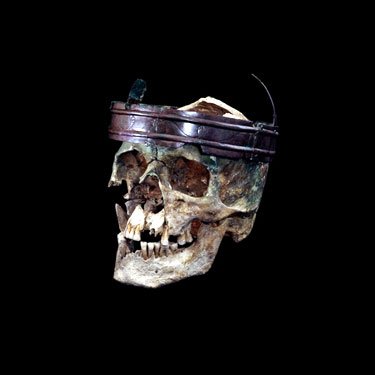In Sweden, Officials Are Simply Recycling Bronze and Iron Age Artifacts
Archaeology, Bronze Age, Iron Age, Sweden

One of the amulet rings from the Iron Age that archaeologists are recycling. Previously, this type of object was saved, says archaeologist Johan Runer.
Rough translation from Swedish language article in Svenska Dagbladet:
While the debate about burning books is raging in the media, Swedish archaeologists throw away amulet rings and other ancient discoveries. It feels wrong and sad to destroy thousands of years of ritual arts and crafts, and I’m not alone in feeling so.
“What you do is destroy our history! Says Johan Runer, archaeologist at Stockholm County Museum.
Amulet rings from the Iron Age, like Viking weights and coins, belong to a category of objects that, as far as Runer knows, were previously always saved.
He tried to raise the alarm in an article in the journal Popular Archeology (No. 4/2016), describing how arbitrary thinning occurs. Especially in archeological studies before construction and road projects, the focus is on quickly and cheaply removing the heritage so that the machine tools can proceed.
He works himself in these kinds of excavations. Nobody working in field archeology wants to get a reputation as an uncooperative “find-fanatic” but now he cannot be quiet any longer.
“It’s quite crazy, but this field operates in the marketplace. We are doing business,” says Runer.
Often, especially in the case of minor excavations, there is a standing order from the county administrative boards that as few discoveries as possible should be taken.
If you think it seems unlikely, I recommend reading the National Archives Office’s open archive, such as report 2016: 38. An archaeological preamble of settlement of bronze and iron age before reconstruction by Flädie on the E6 outside Lund.
In the finds catalog, coins, knives, a tin ornament, a ring and a weight from the Viking Age or early Middle Ages have been placed in the column “Weeded Out”.
Current research about weights and measures focusing on the Viking era is underway, “says Lena Holmquist, archaeologist at Stockholm University.
But one puzzle piece is gone.
At another dig in the millennial culture village Molnby in Vallentuna, several amulet rings from the Iron Age were found. Amulet rings were ritual items used during the Vendel and Viking times.
Johan Anund, Regional Director of the Archaeology Staff at the State Historical Museums who made the thinning, says that archaeologists at all times have to make priorities in order to avoid drowning in objects.
It is the county boards that hire archaeology staffs to carry out archaeological investigations. An easy way to lower the cost is to reduce the number of items to be preserved.
Ceramics require no preservation and are usually saved. However, iron and metal must be treated after perhaps a thousand years in the ground. So if the staff puts funds for conserving two metal objects in its bid but finds twelve then they have to discard ten. To metal recycling.
The historical museum now only deals with objects that have been preserved.
Weeding out typically occurs in the field, usually by an individual who must quickly decide: save or throw away? As a result, familiar objects are preserved.
Last year a sensational little dragon was found in Birka. It looked the more like a lump of rust when it was picked up, but the archaeologists in Birka are among the few who have the time and capabilities to investigate. On a commissioned archaeological dig, the dragon would probably have been thrown away.
Archaeologists do not give away or sell finds because they do not want to create a market for antiquities and encourage robbers with metal detectors, says Runer. Thus: the bin.
“It is troubling when in other countries everything is done to preserve their heritage …,” says archaeologist Lena Holmquist.
Conclusion: If society no longer believes it can afford to take responsibility for Sweden’s history, county councils should stop builders and developers from excavating ancient sites. One alternative is to stop outsourcing the cultural heritage to the lowest bidder with the largest waste bin.
Now the question is what the National Antiquarian Lars Amréus, or the cultural minister, are thinking? They are responsible for the cultural heritage of Sweden and the destruction of history takes place during their shift.
Isn’t it typical of academics and state bureaucrats that they’d rather throw artifacts in the recycling bin than release them into the hands of private collectors? God forbid, some private citizen with a metal detector, lacking a badge and the right university credentials should find anything!
HT: Jean-Batave Poqueliche, at Return of Kings, who found the story and spun it in the direction of deliberate Multicultural malevolence.





